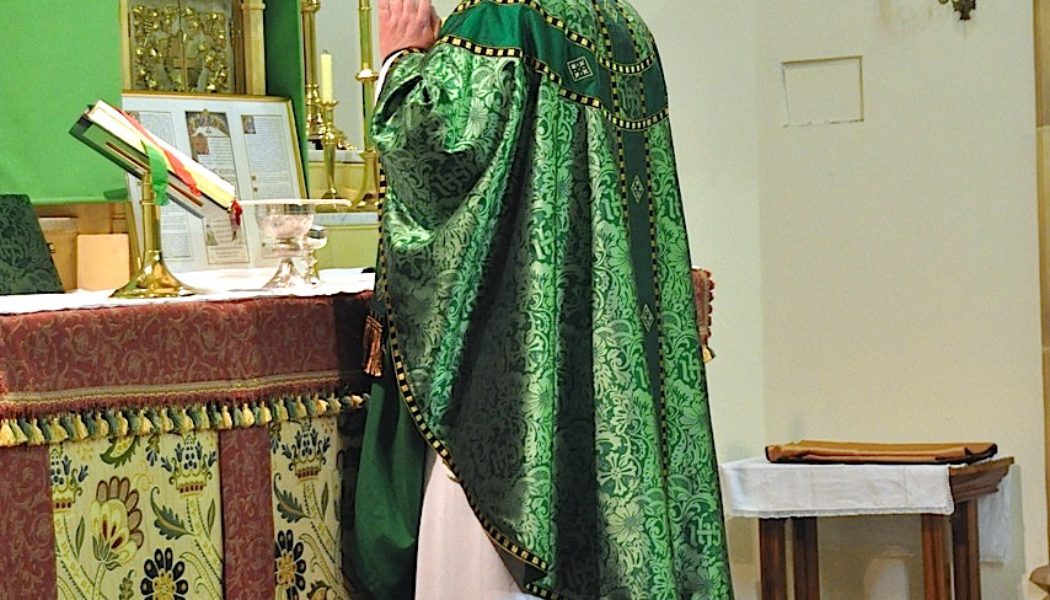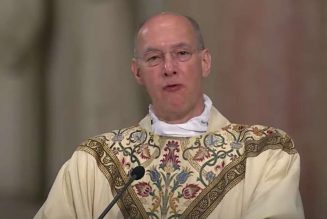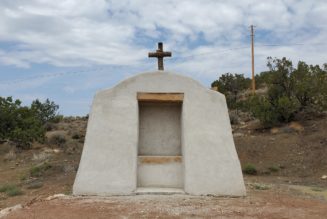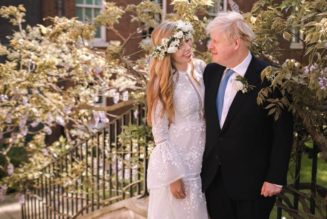
Now in Ordinary Time we’re back to wearing green vestments and folks quite rightly wonder what the meaning of the four colors of vestments signify. (six if you count the rose and black vestments ) So I explain to the altar boys that red is for the blood of the martyrs and the fire of the Holy Spirit. White and gold for the glory of God and the celebration of Easter and Christmastide.Purple is more somber to mark the penitential seasons of Advent and Lent. But why green? Is it for summertime when everything is green and growing? Maybe, but the explanation seems strained at best.
The British scholar Margaret Baker has unlocked a detail in her studies of the worship in the Jewish temple that helps elucidate the tradition of color in Catholic vestments. In fact, the development of the traditions of the different colors is very complicated and it was only comparatively recently that the four colors were standardized and universally accepted. In various countries different traditions developed independently. So, for example, in medieval England during Lent they used “Lenten array”–a simple burlap kind of fabric embroidered with instruments of Our Lord’s passion. You can see an example here. This is still a custom in many Anglican churches. Elsewhere blue vestments were worn for Advent.
So what is Margaret Barker’s insight? She observed that the curtain in the temple that separated the Holy place from the Holy of Holies was woven in four colors: white, red, purple and blue. The four colors represented the four elements of air, earth, fire and water from which the ancients believed the whole material realm was forged. Red stood for fire. White for earth because the white fabric was linen which was refined from flax which grew in the earth. Purple stood for water because the dye for the purple was taken from the gland of a mollusk which was found in the seabed. Learn more here. Blue was for air–the color of the sky.
These four colors therefore symbolized the material realm of reality. What is interesting is that the priests’ also wore a vestment woven from the four colors. Once a year the priest, wearing the woven vestment went through the curtain into the Holy of Holies. He would then return through the veil/curtain to continue his ministry. Barker points out the beautiful symbolism: God would come from his invisible realm (the Holy of Holies) and enter our realm through the veil of the physical realities. This is expressed in that beautiful Eucharistic hymn Alleluia Sing to Jesus where we sing, Thou within the veil has entered, robed in flesh our great high priest…thou on earth both priest and victim in the Eucharistic feast.
There is a Marian connection too because Barker has discerned that there was a guild of virgins whose job it was to weave the vestments and the temple veil and in chapter ten of the Protoevangelium of James (from which we gather the traditions of the Virgin’s family and childhood) tells us that the girl Mary was spinning scarlet and purple to be used in the temple veil when the angel Gabriel appeared to her. If you look closely at some of the iconography of the Annunciation you will see the Virgin at a loom. The Blessed Virgin was therefore woven into this intricate symbolism (if you’ll excuse the pun)
Therefore, the priest’s vestments signify more than martyr’s blood, Easter joy or the green growing season of summer. The colors represent the physical, material order through which the second person of the Holy Trinity came for mankind’s salvation. Taking flesh from his Virgin Mother he also robed himself in the whole physical realm. When he died the curtain in the temple was torn from top to bottom. (Mt 27:51) signifying the rending of Christ’s vestment of flesh on the cross by which also the Holy of Holies was opened to all who would enter by his saving death.
It is amazing that the four colors have carried over into the Catholic colors of the vestments. Hold on! I hear you say. “That still doesn’t explain the green. You said the four colors in the temple were white, red, purple and blue. Where’s the green?” OK. Over the years green gradually replaced blue, but when I recently ordered a set of vestments for our new church I stipulated that the green vestments should be lined with blue, so whenever I vest and set up the altar during this season I see the blue beneath the green and remember the mystery of Our Lord’s incarnation.
Join Our Telegram Group : Salvation & Prosperity









